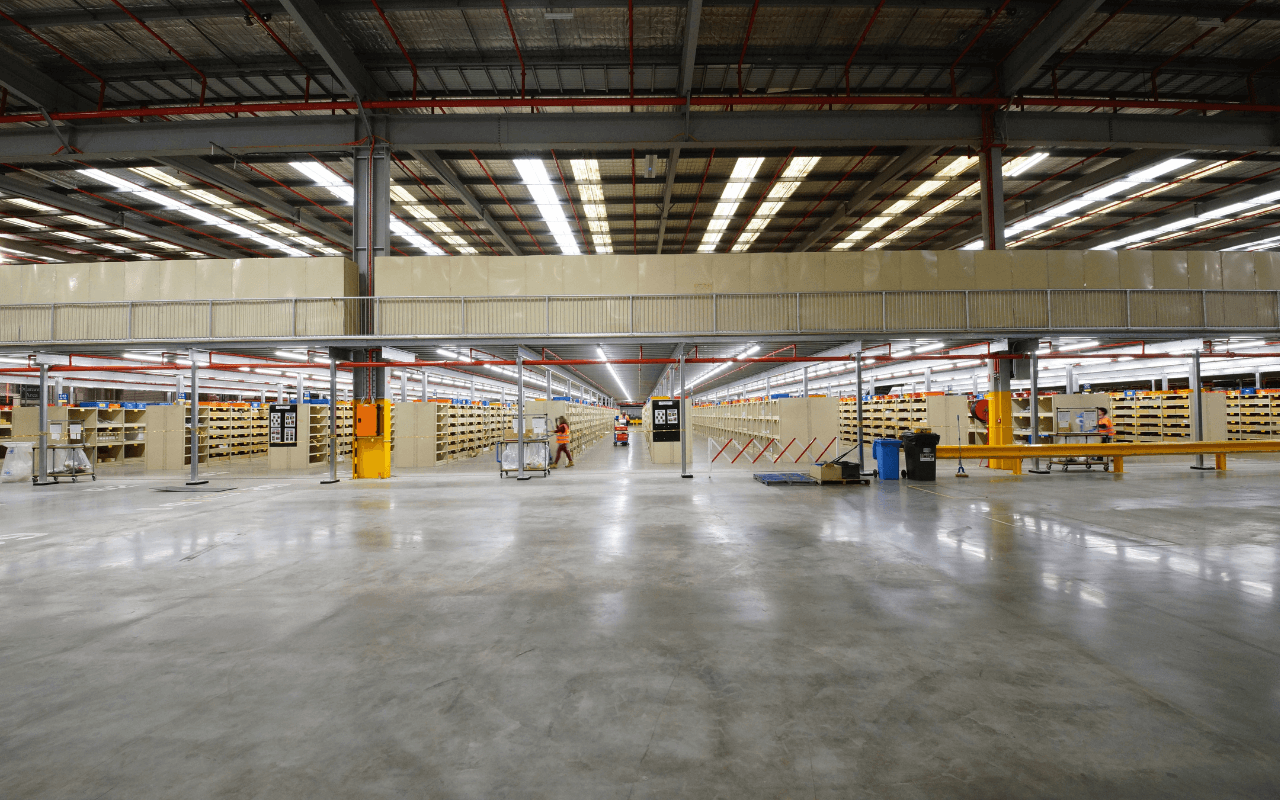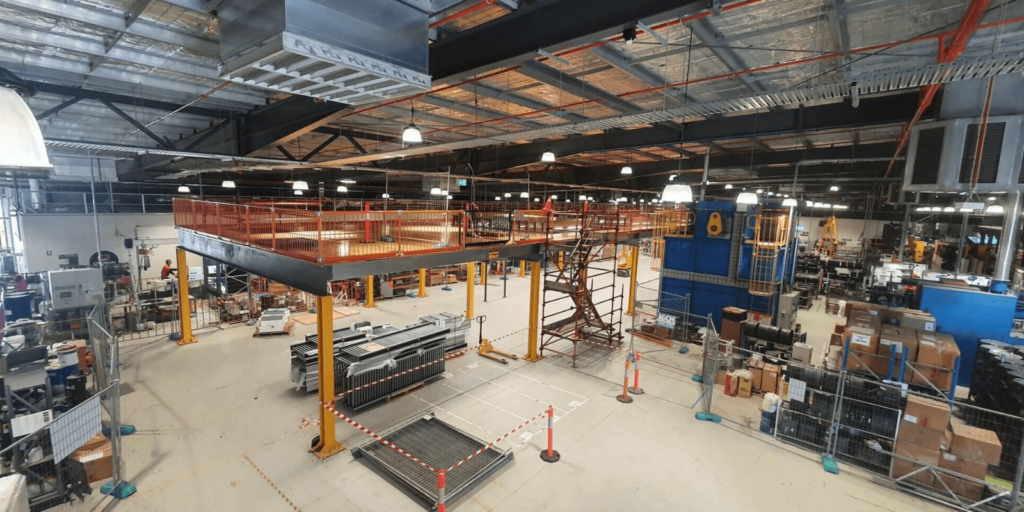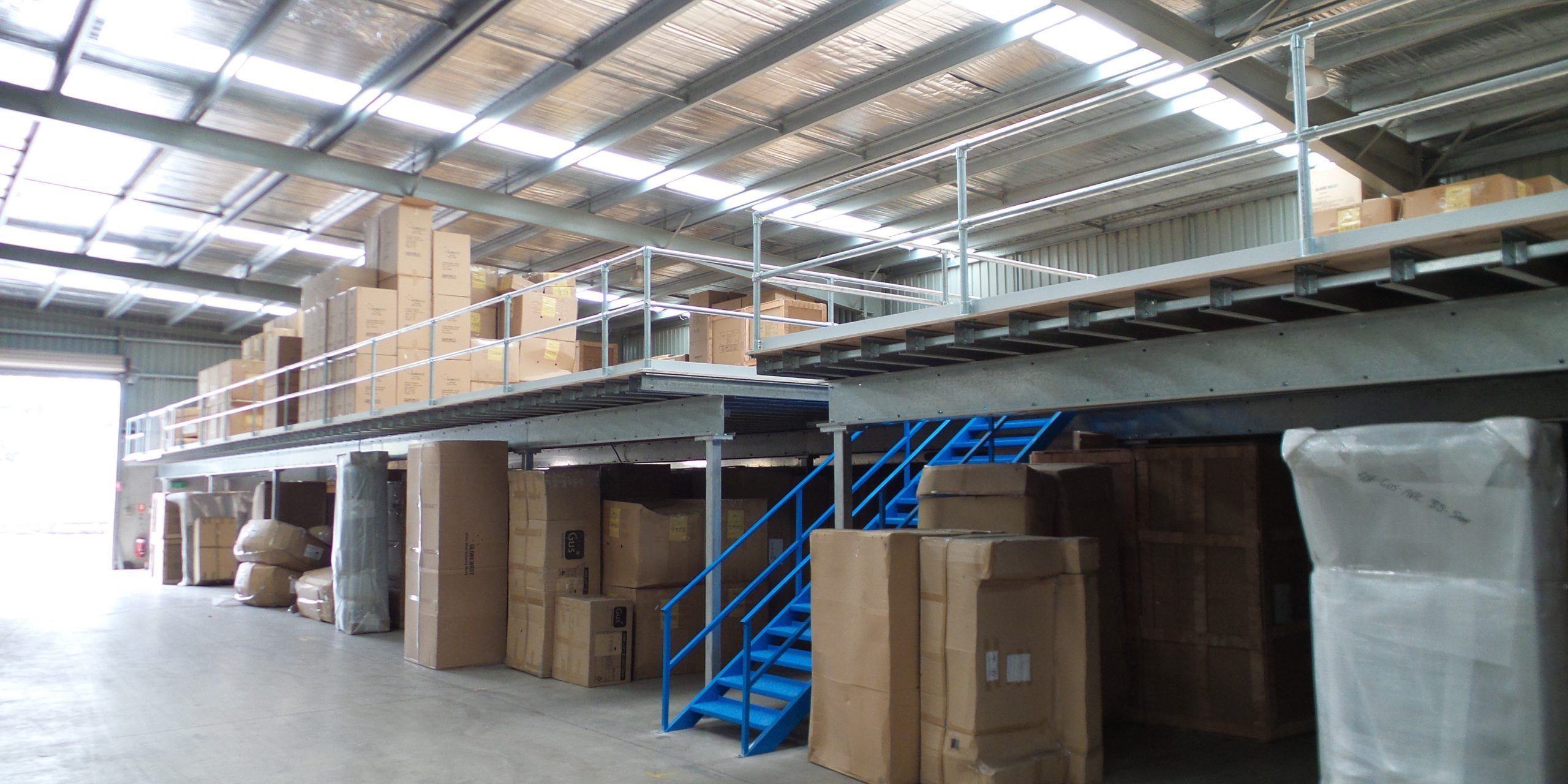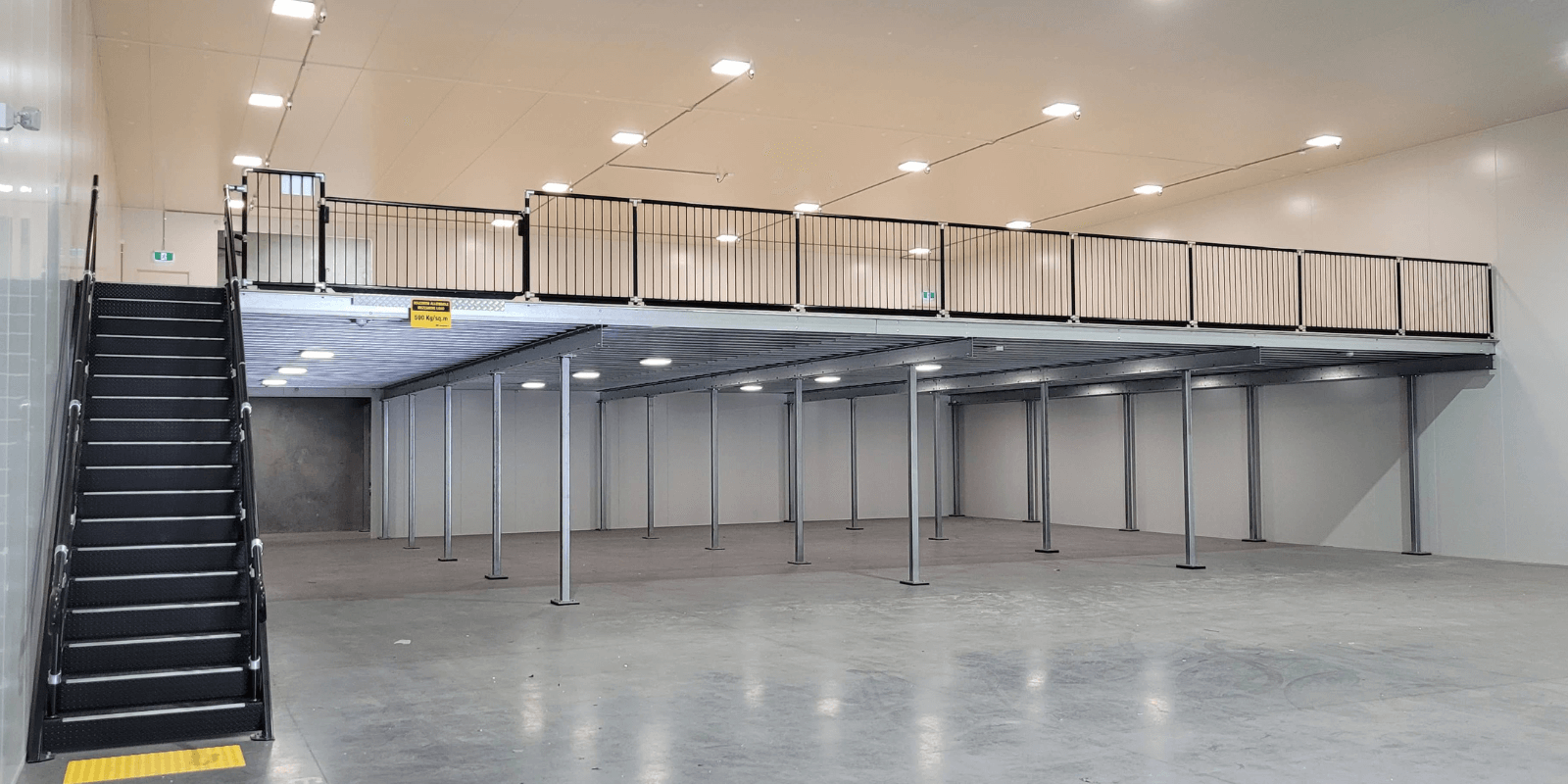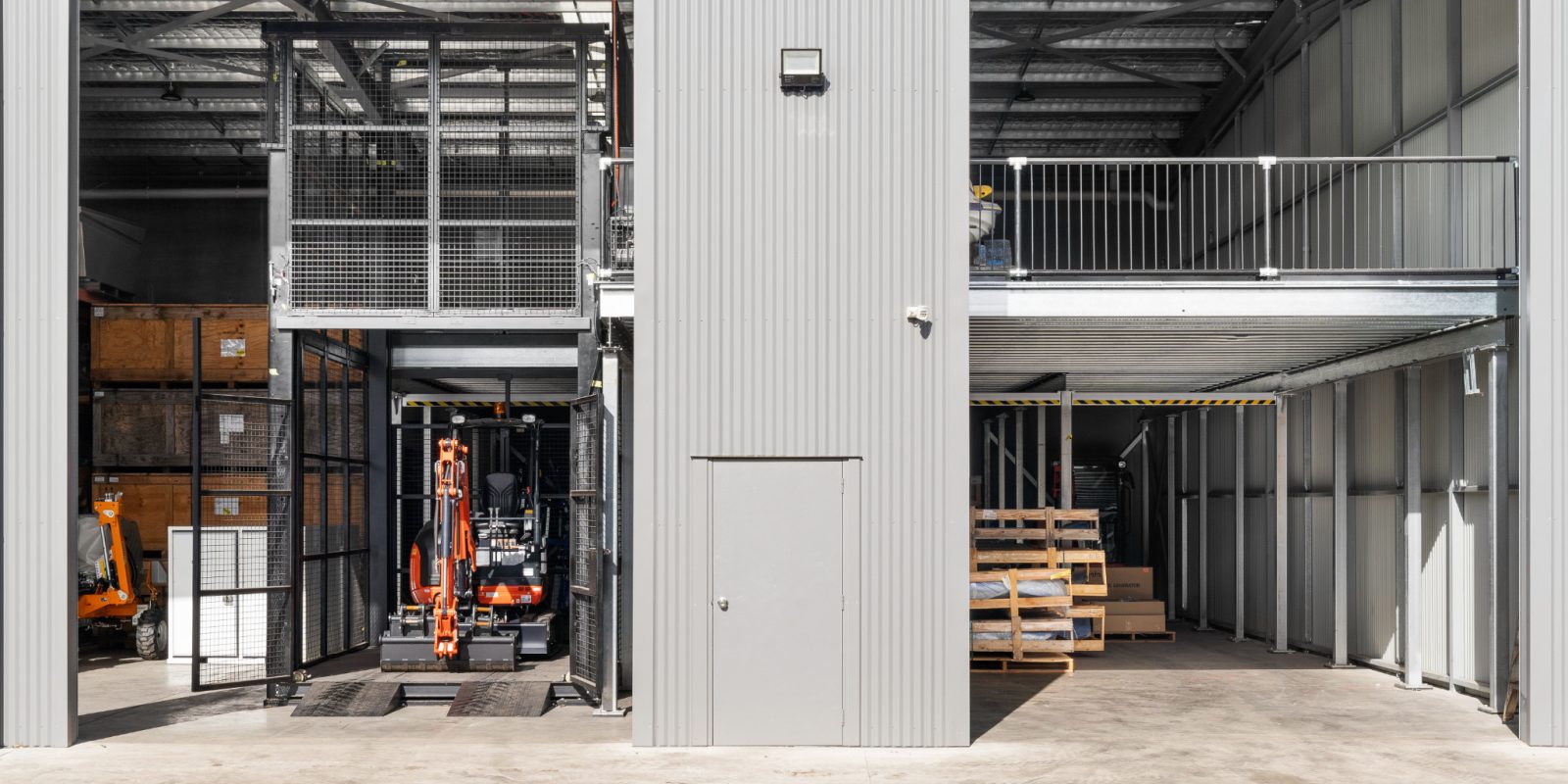Table of Contents
Key Takeaways
Commercial mezzanine floors optimise space without extensive renovations or relocations. They effectively double usable space, offering cost efficiency, flexibility, and quick installation. Planning is crucial: assess space, determine load capacity, and ensure regulatory compliance. The integration process involves design, permitting, site preparation, installation, and safety inspections. Minimising disruption is key, achieved through phased installation, off-hours work, and clear communication. Address challenges like structural limitations, regulatory hurdles, and safety concerns by consulting experts and using modern technology. Mezzanine floors enhance operational efficiency and are a strategic investment for future growth, providing significant cost savings and productivity improvements.
Commercial mezzanine floors provide a unique solution for optimising space without requiring extensive renovations or relocation to larger premises. However, the challenge lies in seamlessly integrating these structures into existing spaces without disrupting daily operations. This guide offers comprehensive strategies for decision-makers in warehousing, logistics, manufacturing, and facility management sectors to efficiently integrate mezzanine floors with minimal disruption.
Understanding Mezzanine Floors
Mezzanine floors are intermediate levels installed between the main floors of a building, creating additional space within the existing vertical area. These floors are not only versatile but also cost-effective, expanding usable space without altering the building’s footprint. For managers and decision-makers in various industries, mezzanine floors significantly enhance operational capacity and efficiency.
Benefits of Mezzanine Floors
- Maximised Space Utilisation: Mezzanine floors can effectively double usable floor space within the same footprint. This is particularly advantageous in environments where space is at a premium, such as warehouses and manufacturing plants. By utilising vertical space, businesses can avoid the high costs associated with relocation or new construction.
- Cost Efficiency: Compared to building extensions or constructing new facilities, mezzanine floors are more affordable. They require less material, labour, and time to install. This translates to lower initial costs and quicker returns on investment. Additionally, mezzanine floors can be depreciated as equipment rather than part of the building structure, providing potential tax benefits.
- Flexibility and Customisation: Mezzanine floors are highly customisable, allowing businesses to design layouts according to their specific needs. Whether you need additional storage, office space, or production areas, mezzanine floors can be tailored to meet these requirements. This flexibility makes them an ideal solution for various industries and applications.
- Quick Installation: With proper planning and preparation, mezzanine floors can be installed relatively quickly. This Minimises downtime and disruption to daily operations, allowing businesses to continue functioning smoothly. The installation process typically involves less noise and mess compared to traditional construction methods.
- Enhanced Productivity: By creating additional space for operations, mezzanine floors can help streamline workflows and improve productivity. For example, warehouses can use mezzanine levels for sorting and packing areas, while manufacturing plants can add new production lines or assembly areas.
Planning and Design Considerations
Before integrating a mezzanine floor, thorough planning and design are crucial to ensure the project’s success. Here are key considerations to keep in mind:
Assessing Space and Requirements
- Space Assessment: Conduct a detailed assessment of your existing space. Identify areas where mezzanine floors can be integrated without obstructing essential operations. Consider factors such as ceiling height, existing structural elements, and access points.
- Purpose and Load Capacity: Determine the purpose of the mezzanine floor and the load it will carry. This will influence the design, materials, and structural requirements. For example, a mezzanine used for storage will have different load-bearing needs compared to one used for office space.
- Regulatory Compliance: Ensure compliance with local building codes and regulations. This includes obtaining necessary permits and adhering to safety standards. Failing to comply with regulations can result in costly fines and delays.
Integration Process
The process of integrating mezzanine floors involves several steps, each requiring careful planning and execution to Minimise disruption to ongoing operations.
- Design and Engineering: Work with professionals to create a detailed design. This should include structural calculations, material specifications, and layout plans. The design phase is critical as it sets the foundation for the entire project. Considerations such as load distribution, access points, and fire safety measures should be addressed at this stage.
- Permitting and Approvals: Submit the design for regulatory approval. Ensure all necessary permits are obtained before commencing construction. Navigating the permitting process can be complex, but it is essential for ensuring the safety and legality of the mezzanine floor.
- Site Preparation: Prepare the site by clearing the area and making any necessary modifications to the existing structure. This may involve relocating equipment, reinforcing foundations, or adjusting utilities. Proper site preparation is crucial for a smooth installation process.
- Installation: The installation process typically involves the following steps:
- Foundation Work: Reinforce the foundation if needed to support the additional load. This may involve pouring new concrete footings or installing additional support columns.
- Structural Assembly: Erect the steel framework and install the flooring system. This stage often involves heavy lifting and precision work, so it’s important to have skilled labor on-site.
- Finishing: Add railings, stairs, and any other necessary components. Ensure that all safety features, such as handrails and fire exits, are installed according to regulations.
- Safety and Inspections: Conduct thorough safety inspections to ensure the structure meets all regulatory requirements and is safe for use. This includes checking load capacities, verifying structural integrity, and ensuring all safety features are in place.
Minimising Disruption
One of the main concerns when integrating mezzanine floors is minimizing disruption to ongoing operations. Here are strategies to achieve this:
Phased Installation
Implement a phased installation approach. This involves dividing the project into manageable phases, allowing parts of the facility to remain operational while construction is ongoing. For example, you can start with one section of the warehouse and move to the next only after the first phase is completed. This approach helps maintain productivity and reduces the impact on daily operations.
Off-Hours Work
Schedule construction work during off-hours or less busy times. This reduces the impact on daily operations and helps maintain productivity. For facilities that operate 24/7, consider working in shifts or over weekends to Minimise disruption.
Clear Communication
Maintain clear communication with all stakeholders, including employees, contractors, and suppliers. Inform them of the project timeline, potential disruptions, and safety measures in place. Regular updates can help manage expectations and reduce anxiety among staff.
Challenges and Solutions
Structural Limitations
Some buildings may have structural limitations that make mezzanine floor integration challenging. In such cases, consult with structural engineers to explore solutions such as reinforcing existing structures or using lightweight materials. Advanced materials like composite decking can provide strength without adding excessive weight.
Regulatory Hurdles
Navigating regulatory requirements can be complex. Engage with professionals who have experience in obtaining permits and ensuring compliance with local building codes. They can help streamline the process and avoid potential pitfalls.
Safety Concerns
Safety is paramount in any construction project. Implement robust safety measures, conduct regular inspections, and ensure all workers are trained and equipped with necessary safety gear. Consider hiring a safety officer to oversee the project and ensure compliance with all safety regulations.
Future Considerations
As industries continue to evolve, the demand for flexible and efficient space solutions will grow. Investing in mezzanine floors not only addresses current space constraints but also positions your business for future expansion. Keep abreast of new materials, design innovations, and regulatory changes to stay ahead in maximising your operational space.
Best Practices for Seamless Integration
To ensure the successful integration of mezzanine floors without disrupting ongoing operations, consider the following best practices:
Comprehensive Planning
Start with a comprehensive plan that outlines the project scope, timeline, budget, and key milestones. A detailed plan helps identify potential challenges and develop strategies to mitigate them. Involve all stakeholders in the planning process to ensure their needs and concerns are addressed.
Engage Experienced Contractors
Hire contractors with experience in installing mezzanine floors. Experienced contractors can navigate the complexities of the installation process and deliver high-quality results. Look for contractors with a proven track record and positive references.
Utilise Modern Technology
Leverage modern technology such as 3D modelling and simulation to visualize the mezzanine floor integration. This can help identify potential issues and make necessary adjustments before construction begins. Technology can also aid in efficient project management and communication.
Maintain Flexibility
While having a plan is crucial, it’s equally important to remain flexible. Unexpected challenges may arise, and being able to adapt quickly can help keep the project on track. Regularly review the project’s progress and adjust as needed.
Conclusion
Integrating commercial mezzanine floors into your existing space offers significant benefits, from maximising space utilization to enhancing operational efficiency. By planning meticulously, engaging with professionals, and implementing strategies to Minimise disruption, you can successfully integrate mezzanine floors without halting your operations. The key is thorough preparation, clear communication, and adherence to safety and regulatory standards.
In conclusion, mezzanine floors present a viable solution for businesses seeking to Optimise their space. With the right approach, you can enhance your facility’s capacity and efficiency, driving growth and profitability.
Final Thoughts
As industries continue to evolve, the demand for flexible and efficient space solutions will grow. Investing in mezzanine floors not only addresses current space constraints but also positions your business for future expansion. Keep abreast of new materials, design innovations, and regulatory changes to stay ahead in maximising your operational space.
By integrating mezzanine floors seamlessly into your existing space, you can achieve significant operational efficiencies, cost savings, and revenue generation, ensuring your business remains competitive and agile in a rapidly changing market.
No Obligation Consultation -
Your Questions,
Our Expertise
Why Chat With Us?
We understand the importance of making informed decisions. This is why we offer a no-obligation consultation with our specialist consultants. Our team of experts consultants is not just knowledgeable; they are passionate about providing bespoke solutions that fit your unique needs.
